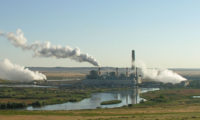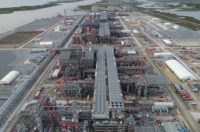As construction started gearing up late last year to rebuild some 3,000 homes in Santa Rosa burned by the 2017 Tubbs Fire, there were several challenges. One of the greatest was the shortage of concrete.
“We were two, three, four weeks out on concrete,” says John Farrow, CEO and president of Santa Rosa-based Farrow Construction. Farrow approached the owner of a small batch plant and asked what could be done to speed the process. The batch plant owner’s answer? “Buy my plant.”
That’s exactly what Farrow did.
“Now we are working with all of our local general contractors and partners and trade peers in the industry and we’re putting homeowners back in their houses,” he says.
|
Related Article |
Farrow’s tale isn’t even the most drastic measure taken to help residents get back home. On. Nov. 24, 2017 — less than two months after the Oct. 8 fire — the city of Santa Rosa opened a “Resilient City” permitting center specifically for the burned-out homeowners and awarded outside contractor Bureau Veritas a $9-million, 2-year contract, to operate the center. Permitting fees were also reduced and some fees have been waived.
“It was something we had to do on the fly,” says David Guhin, assistant city manager and director of economic planning and development for the city. “There was no textbook for this. As a city we had to be more resilient in terms of how we think, how we operate, how we function. And again, setting up a system overnight is not something cities typically do.”
As of April 10, 240 homes are completed, another 1,056 are under construction and about 450 permits are either under review or complete, according to a special website the city established, to help track rebuilding. Every map or document related to the homes has been scanned and is available online.
The city can now turn around a single-family building permit in five days. “It’s been a constant evolution,” says Jesse Oswald, building division chief for the city. Flexibility is necessary he says, for one reason because in many cases there is no sign of the existing foundations.
“The topography was completely altered,” says Greg Hurd, vice president of civil engineering for BKF Engineers. Updated codes also require thicker walls in the high fire-hazard areas such as Fountaingrove, meaning different setbacks are needed.
“If we wait until we get everything perfect, nothing will happen because these things are changing so quickly,” Guhin.
To manage the more than 100 general contractors all working on the rebuilding, including in the tight quarters of Coffey Park, the city has a team of inspectors led by Bob Oller. Oller lost his own home during the fire. “I’m in a unique position where I can understand what the property owners and builders are going through because I’m experiencing the same type of things myself.”
The team has streamlined violation forms that are handed out to GCs if they are operating without proper safety measures, if they aren’t properly treating stormwater or if they are blocking other work or residents. The notifications are also sent to the homeowners so they know what’s happening on their homesite.
“Every day it’s something,” says Oswald. “Concrete is becoming a bottleneck, so they come and pour early and the noise effects those living next door. Or lumber is being brought onsite while the mail is trying to be delivered. It’s fascinating.”






Post a comment to this article
Report Abusive Comment